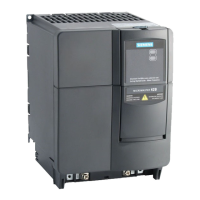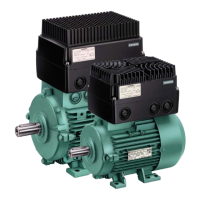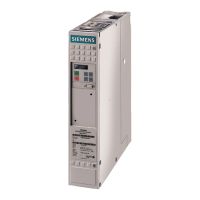(1*,1((5,1*,1)250$7,21 ,QWHUQDWLRQDO(QJOLVK
MICROMASTER 420 Reference Manual
16 Issue A1
In general, the most stable control is achieved by using both proportional and
integral terms, and if the system is liable to experience sudden disturbances we
would not recommend setting the P term (P2280) greater than 0.50.
A block diagram showing the relationships and interaction between PI Setpoint and
PI Feedback is shown in Figure 2-10 on Page 19.
2.8.6 Ziegler-Nichols method of Optimisation
The Ziegler-Nichols method is a means of calculating the3roportional gain and
,ntegral time by measuring the system response to a step change in open loop.
This is done by putting the inverter in frequency control and monitoring the
feedback signal. From the feedback response, the time before the system starts to
respond, /, and the dominant time constant, 7, which is measured by estimating
when the system response would have reached its stationary value if the maximum
slope was maintained. (Typically measure to where the system response has
reached 85% of its final value). From L, T and the ratio between the frequency
step ∆I(as % of F
max
) to the feedback value change ∆[(%), it is possible to
calculate the P and I terms for a PI control process as follows:
3JDLQ 7∆I/∆[
,WLPH /
([DPSOH
With the inverter in frequency control, a frequency step of 5 Hz is given and the
feedback signal monitored. To allow this the following parameters are set:
P2200 = 0
P1120 = 0.0 s
P1121 = 0.0 s
P1080 = 50.0 Hz.
Figure 2-7 Response to 5 Hz step: L = 100 ms

